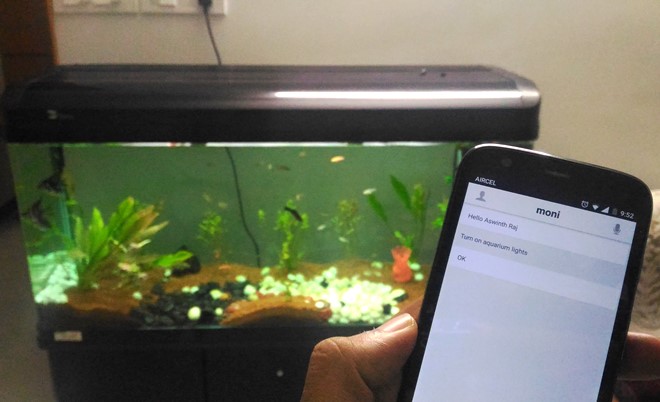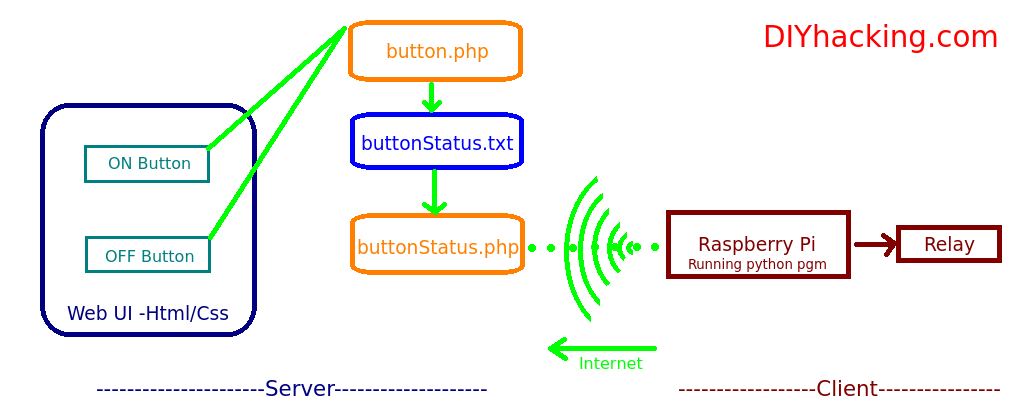Table of Content
This design is based on the popular ARM 11 hardware board, in which cloud computing can be established, where the sensors and electrical appliances are connected to the input/output ports of the board. Seed block algorithm is used for providing secure access to the data. In order to enhance the system responsiveness and to make it more dynamic, we have been integrating a popular and stable LINUX OS. Rapid increase in the number of users of internet over the past decade has made Internet a part and parcel of life, and IoT is the latest and emerging internet technology. Internet of things is a growing network of everyday object from industrial machine to consumer goods that can share information and complete tasks while you are busy with other activities.
Here we propose an IOT based home automation system using raspberry pi that automates home appliances and allows user to control them easily through internet from anywhere over the world. Our proposed system consists of a microcontroller based circuit that has lights and fan connected to it along with LCD display and Wifi connector interfaced with raspberry pi. Our system interacts with out online IOT system that IOT Gecko free web interface for controlling our home appliances with ease. After linking with IOT Gecko, the user is allowed to send load switching commands over IOT to our circuit.
Hardware Requirement
It is meant to save the electric power and human energy. The home automation system differs from other system by allowing the user to operate the system from anywhere around the world through internet connection. The system will automatically change on the basis of sensors’ data. This system is designed to be low cost and expandable allowing a variety of devices to be controlled. Internet of things is a technology of the future that has already started to touch our homes.

Make sure your Raspberry Pi is connected to internet. Also, you can change the code according to your need but you have to fork example code you want to use. We have to install the Particle agent in our Raspberry Pi to connect it with the Particle Cloud. Particle Agent is a software service which runs in the background to interacts with the GPIO pins of the Raspberry pi. Before installing the agent, you have to make an account on the Particle.io. This project aims at developing a system which gives body temperature and heart rate using LM35 and pulse sensor respectively which are interfaced with controller node MCU.
Step 3: Run Blynk App for Controlling Home Appliances
The html code pulls everything together, javascript and the style sheet. The CSS script feels too bulky to include here so I will just pick part of it and use them for the breakdown. CSS is easy and you can understand it just by going through the CSS code. You can easily skit this part and use our CSS code straight away.
Give the hyperlink of “lightoff.php” for the ‘off’ button. When this script executes, the Raspberry Pi will turn the lights off. Go to your site design and give a hyperlink to ‘lighton.php’ for the ‘On’ button.
Special Offer to SlideShare Readers
The Raspberry Pi is a basic embedded system and being a low cost single-board computer used to reduce the complexity of systems in real time applications. This application mainly serves as an efficient base to control various home appliance like Fan, Tube light, Refrigerator through mobile based application. The application is designed to provide a facility to user to access control of many appliances used in homes.
The lines of codes above simply changes the color of the button based on its current state. When the button is off the buttons background color becomes gray to show its inactive and when its on the background color of the button becomes RED. We then move to set the background size, font and color.
Go, get your Pi, and start making this useful fun making Raspberry Pi home automation project. Now, connect the Brown wire with the relay and tight it with the help of screws. Wring the ends of the wires, make proper insulation and connect the Blue ends of the wire with each other. You can use a soldering iron or cable blocks for this. Cut the flex cable of the lamp which contains Brown and Blue wires inside.
I don't want to paste the entire CSS script here, so I'll use a subset for the explanation. If you want to learn CSS, all you have to do is read the code. You can skip this and use our CSS code if you want to. With the aid of CSS, our Internet of Things Rpi 4 home automation website now looks fantastic.
Thus we automate home appliances over internet using raspberry pi. With the openness, flexibility and features that Android offers, it has been widely adopted in applications beyond just Smart Phones. This paper presents the design and implementation of a low cost yet compact and secure Android smart phone based on home automation system.
We can instruct the WebIOPi program to use GPIO23 for output. Four buttons are now available, but you may add more if necessary. Unfortunately, I could not locate a version of WebIOPi that is compatible with the Pi 4; thus, we have to download a patch before proceeding with the setup. Run the instructions below from within the WebIOPi directory to apply the patch. We'll be using the WebIOPi framework, notepad++ on your PC, and FileZilla to transfer files from your computer to the raspberry pi and the Raspbian operating system. Adafruit SHT40 Temperature and Humidity Sensor Board integrates a fourth-generation sensor and is designed with a true I2C interface.
5.Internet Of Things the concept wasn't named until 1999, the Internet of Things has been in development for decades. The first Internet appliance , for example, was a Coke machine at Carnegie Melon University in the early 1980s. Kevin Ashton, cofounder and executive director of the Auto-ID Center at MIT, first mentioned the Internet of Things in a presentation he made to Procter & Gamble. We are providing electronics projects to engineering students since 2005.

Blynk app is an easy to use Android and IOS based application, helps in controlling Arduino, Raspberry Pi and others for the purpose of IoT. Blynk app is a digital dashboard, where you can build a graphic interface for your project by simply dragging and dropping widgets. The best part of Blynk app is that, it is not bounded with some specific board or platform. Talking about Raspberry Pi is the smallest computer that performs many of the tasks performed by a computer. The relay driver module is interfaced with Raspberry Pi to control the devices.
